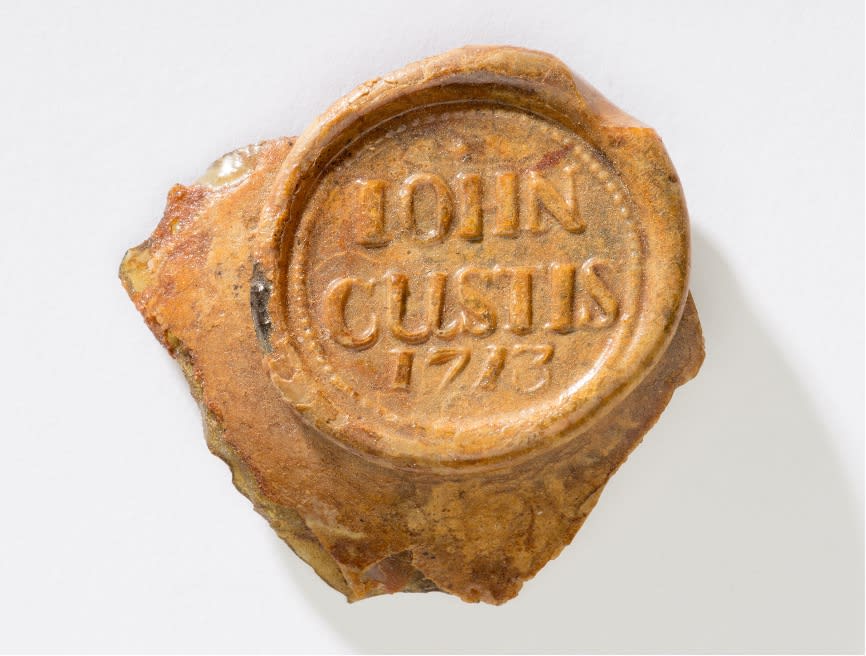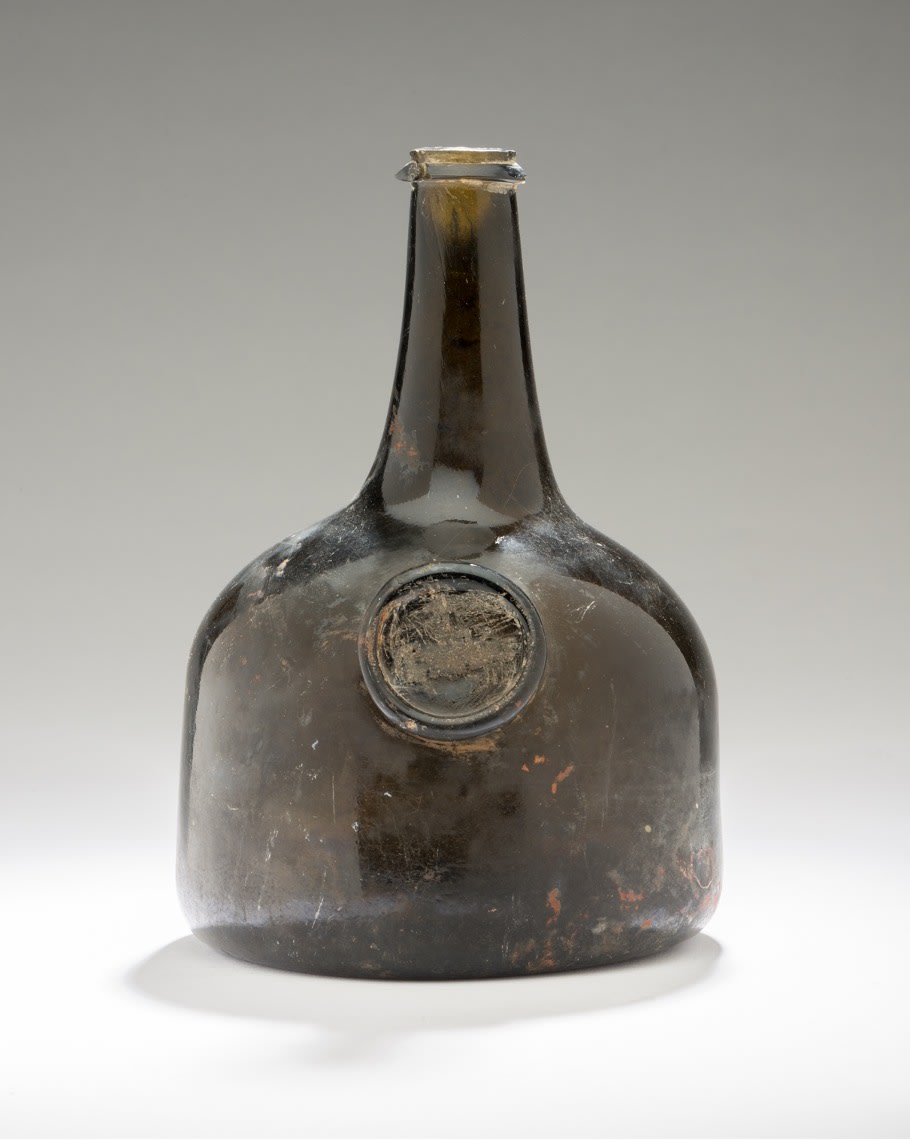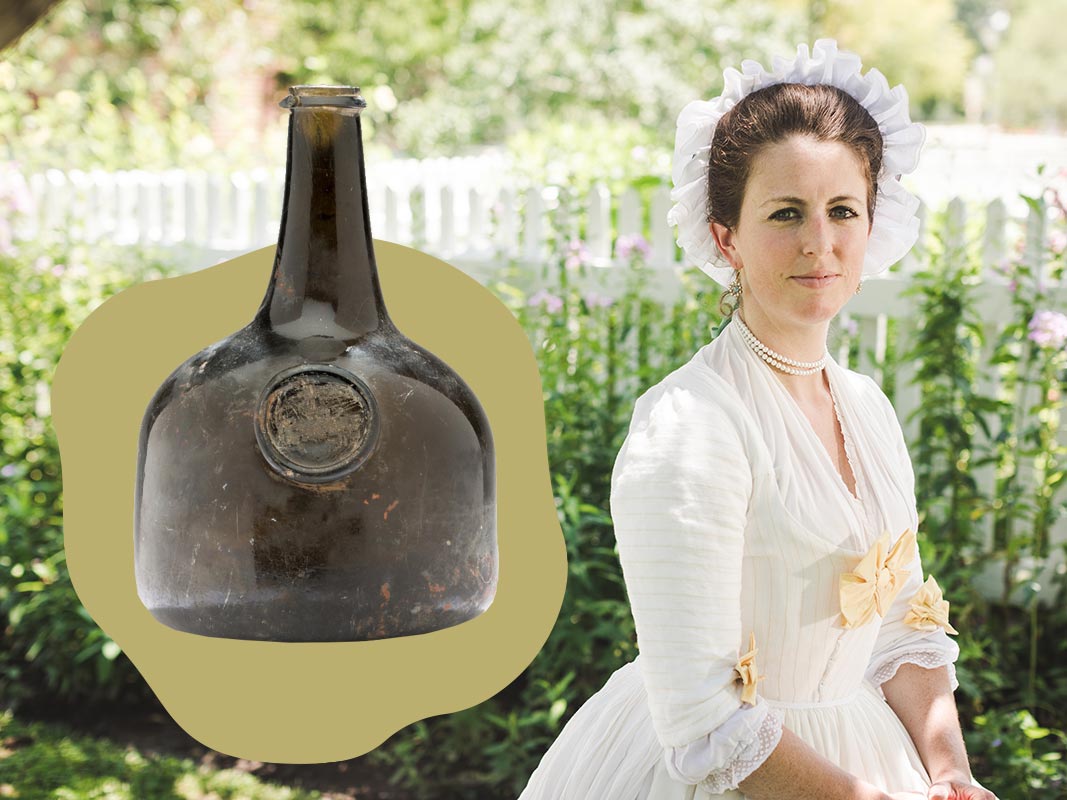“Have you heard the one about George Washington’s wooden teeth?!” Yep, I’ve heard it. I’ve also heard the one about the cherry tree, and (to my amusement) the one about Martha Washington actually being a man and George a woman—yes, you read that correctly. I hear a lot of myths surrounding the Washingtons in my job of researching and portraying Mrs. Washington. A vital part of my position as a Nation Builder for the Foundation is to take these age-old myths that have defined the Washingtons for generations and find the truth (or fiction) behind them.
The Washingtons are ensconced in American lore. Even before their deaths, wild stories surrounding both of the Washingtons circulated throughout the country. It seems everyone has a family story with a Washington connection, and it seems like George Washington slept in almost every tavern and private home in America.
Such stories have also made the rounds through Williamsburg over the years. My favorite goes as follows: Martha Washington’s first father-in-law, John Custis IV, was initially not too keen on the idea of her marrying his son, Daniel Parke Custis. John Custis IV threatened to throw the Custis silver into the streets of Williamsburg rather than let a Dandridge get her hands on it (that part is true). After her first father-in-law and first husband died, Martha received life rights to the Williamsburg Custis properties, including the large Custis Square property (also true).
The story then goes that after she came into possession of the home, she rampaged through it, selling everything and smashing more than 100 bottles of wine down the well in a rage! She supposedly even went so far as to deface one of the Custis seals on the bottles to spite her father-in-law! Pretty dramatic, right? You can just see petite Martha, red-faced, running through the house and taking revenge on the man who attempted to thwart her first marriage.
Over the years, I’ve been told several versions of this story by guests and colleagues alike. I began to wonder why Mrs. Washington would act in a way that was so contrary to her natural demeanor. Now, I’m not saying that Mrs. Washington didn’t have a temper. She definitely liked things her way, but smashing more than 100 bottles of perfectly good wine? That didn’t seem like something a good Virginia housewife would have done. So, I put on my investigator hat and took the story to task.
I started by examining the inventory records for the Custis estates that were dated around the time this incident allegedly occurred. Sure enough, there was a massive estate sale at the Custis Square property in Williamsburg in October 1759, during which time it seems that she sold the majority of the goods in the house. OK, so that part checks out. But what about the wine bottles? The person I decided to consult about this part of the story just happens to be someone I know extremely well: my father-in-law.
Bill Pittman worked for the Colonial Williamsburg Foundation for 36 years in many capacities but retired as Curator of Archeological Collections. His specialty is…wait for it…bottles. My father-in-law can date a bottle almost to the exact year it was made just by looking at it. When I mentioned this story to him one day, he very nonchalantly said, “Oh yeah. I remember when those were found.” He told me that the archaeologists had found the remnants of about 60 wine bottle seals, some still attached to the bottles, down one of the wells at the site of Custis Square, along with a great number of other artifacts and plant matter.

Basically, the 18th-century inhabitants were using the well as a trash pit. He then told me that all of the recovered bottles and seals dated from the early 1710s, meaning they would have been obsolete and probably empty by 1759 when Mrs. Washington was said to have smashed them.
How do we know this? Well, as my father-in-law explains it, the storage methods of wine changed dramatically over the early part of the 18th century, and as they changed, so did the design of the bottles. Wine bottles from the 1710s, for example, were stored upside down to keep the corks wet, resulting in sediment collecting in the neck of the bottle. Over time, the shape of bottles evolved to a more cylindrical shape so that the sediment no longer collected in the neck of the bottle. The bottles found in the well were an older design and not as fashionable or as useful as the more “modern” cylindrical bottles. So, it seems like Mrs. Washington might have just been taking out the trash. However, my father-in-law did confirm that one of the seals had been scratched out. Not as dramatic a story, but much more in keeping with the Mrs. Washington that I know: practical and neat.

So, does this myth stand up to the test of historical research? In some ways, yes; in other ways, no. We should always be in search of the truth, even if it results in a less sensational story. Can we say with certainty that Mrs. Washington didn’t revel in smashing those bottles down the well, or that Mrs. Washington was actually the one who threw those bottles down the well? Nope. Did she deface that seal, or did something else happen to it? We’ll never truly know. Was she just cleaning out her first father-in-law’s basement and taking out years of trash before putting the house up for rent? Probably. The facts do not inform every aspect of the event, but, at the very least, it gives this story a different angle.
As an interpreter, it provides me with more insight into Mrs. Washington, her family, life in Williamsburg, and the material culture of the 18th century. And thanks to the teamwork of historians, archeologists, interpreters, curators, and every other member of “Team History,” we continue to find layer after layer of who these people might have been and the world in which they lived.
Visit the Custis Square archaeology site and see what our team of archeologists are finding during your next visit!
Katharine Pittman is a Nation Builder for the Colonial Williamsburg Foundation researching and portraying Martha Washington. Her love of history started young as her parents brought her and her brother to CW with frequency as children, grew while getting her degree from Wake Forest University in history and theatre, and cemented in her almost 9 years with the Foundation. Outside of the 18th century, Katharine enjoys spending time with her family, watching Outlander with her girlfriends and drinking massive quantities of coffee.
Resources
- James B. Lynch The Custis Chronicles. Reply of Moodys to Complaint of Daniel Parke Custis, n.d., Mss 1C 9698A 66, Custis Family Papers, ViHi (112).
- “III-A. Schedule A: Assignment of the Widow’s Dower, c. October 1759,” Founders Online, National Archives, last modified June 13, 2018, http://founders.archives.gov/documents/Washington/02-06-02-0164-0005. Also available in print: The Papers of George Washington, Colonial Series, 6:217–20.
- “Appendix B. Account of Sale in Williamsburg for the Estate, Oct. 25, 1759,” Founders Online, National Archives, last modified June 13, 2018, http://founders.archives.gov/documents/Washington/02-06-02-0164-0024. Also available in print: The Papers of George Washington, Colonial Series, 6:280–82.
Colonial Williamsburg is the largest living history museum in the world. Witness history brought to life on the charming streets of the colonial capital, plus, explore our newly expanded and updated Art Museums of Colonial Williamsburg featuring the nation’s premier folk art collection, plus the best in British and American fine and decorative arts from 1670–1840. Check out sales and special offers to plan your visit.
